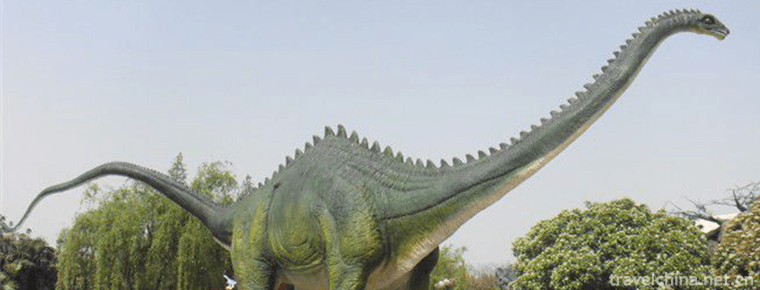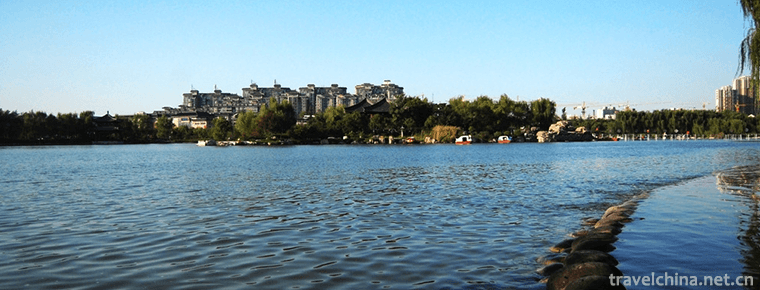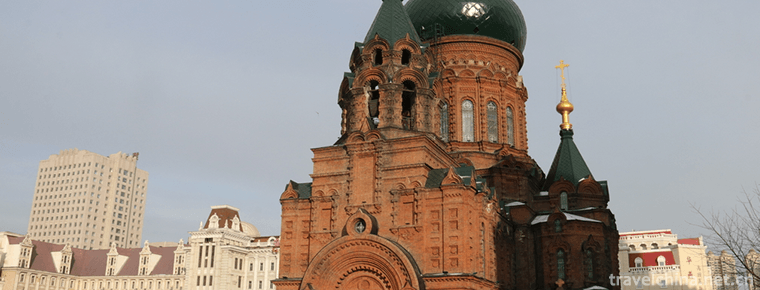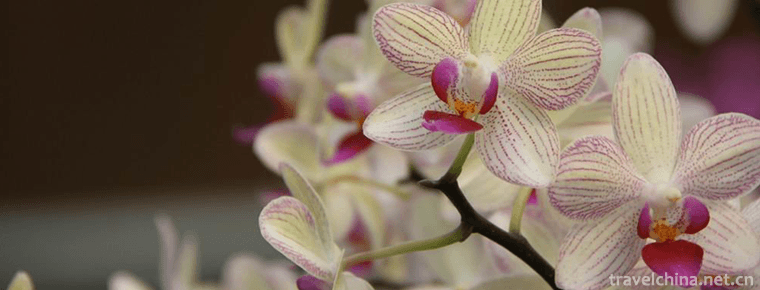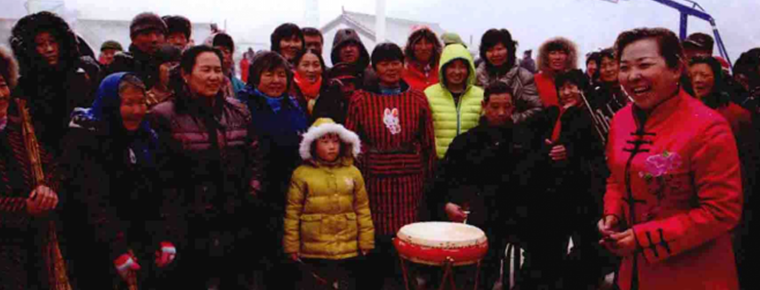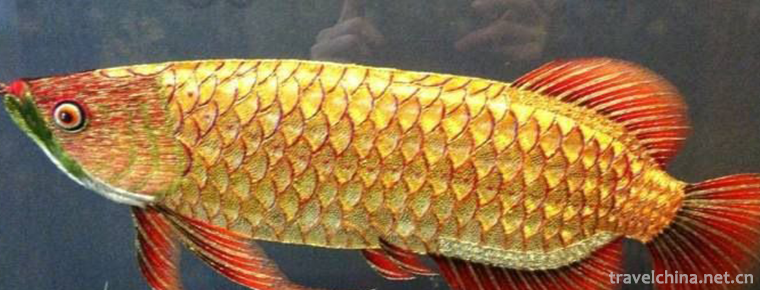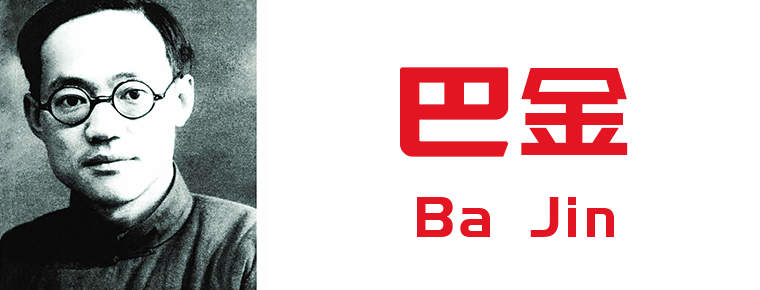Mazu memorial ceremony
Mazu memorial ceremony
Mazu Festival, which originated in Song Dynasty, experienced Yuan, Ming and Qing dynasties and continued to expand and enrich. By the Qing Dynasty, Mazu was named "Tianhou", and the title reached the highest standard.
The system and content of "rules and regulations" of Mazu sacrificial ceremony are basically inherited from the ancient system, with innovation and development.
The Mazu Festival in Meizhou, together with the Mausoleum Festival of the Yellow Emperor and the Confucius Festival, is a combination of folk activities and ancient court ceremonies. It is an important part of Chinese excellent culture and expresses the Chinese nation's admiration for the true, the good and the virtues, as well as the good wish of conquering nature and protecting the people of the United States.
On May 20, 2006, the folklore of Mazu Festival was approved by the State Council and listed in the first batch of national intangible cultural heritage list.
Historical legends
Mazu was born on March 23 of the first year of Song Jianlong (960 A.D.). Therefore, March 23 of the lunar calendar is the birthday of Mazu every year. Mazu was originally named Linmo, her father Linyun, her mother Wang's family, seven brothers and sisters, and she was the youngest. Mazu was smart from childhood, knowledgeable about weather, general medical science, good boat, kind and charitable, and loved by the neighbors. When she grew up, she was determined to do good and hard work all her life. She was determined not to marry and devoted herself to charity and public welfare. In peacetime, intensive medical research, treatment for people, teaching people to prevent epidemics and eliminate disasters. She grew up on the beach, knows astronomy and meteorology, and is familiar with water. Legend has it that she can "ride across the sea", rescue drowning and rescue hardships, and is deeply loved by people. Song Taizong Yongxi died on the ninth day of September in the fourth year of the lunar calendar (987 A.D.) because he was only 28 years old when he was rescued from a shipwreck. In order to commemorate her, people built temples to worship. This is the first Mazu temple in the world, called Mazu temple. After the expansion of Sanbao, a merchant, the scale was formed in the Qing Dynasty.
From Huizong Xuanhe of Song Dynasty to Qing Dynasty, emperors of successive dynasties successively awarded Mazu 36 times, the number of titles increased from 2 words to 64 words, and the titles increased from "Madam" to "imperial concubine", "Tianfei", "Tianhou" to no more. The numerous imperial edicts eventually established Mazu's supreme position as the only sea god. With the spread of overseas Chinese, seafarers and diplomatic envoys, Mazu Faith has become a world-influential sea god. Mazu Spiritual Temple is also spread over more than 20 countries and regions in the world. According to statistics, there are more than 5000 Mazu spiritual temples in the world, with nearly 200 million followers.
Cultural inheritance
After more than a thousand years of communication and deduction, Mazu has stepped out of the palace of simple folk beliefs and formed a kind of traditional folk culture (Mazu culture), which has a wide influence. It involves many fields, such as politics, economy, diplomacy, military affairs, overseas Chinese affairs, trade and culture. It has become a special cultural form of the Chinese nation and a part of Chinese civilization.
Mazu culture has its rich cultural connotation. From an academic point of view, it involves many disciplines, such as religious history, folklore history, navigation history, science and technology history, architecture history, literature history, art history, overseas Chinese history, history of Sino-foreign relations and so on. It is a comprehensive subject with multidisciplinary significance. From the perspective of language and folklore, the myths and legends of Mazu are the important contents of Mazu culture, and Mazu beliefs and the folk customs formed by them are also Mazu writings. Important components of modernization, such as popular Mazu bun, Mazu clothes, Mazu's face, Mazu sacrifices, on-board Mazu gods, sacrifices before sailing, shipyards for Mazu, model ships, aquarium pilgrimage offerings and legends, Mazu babysitting, baby suckling, sachets and so on. Taiwanese Mazu beliefs and their customs include homing fire, passing stove, Spring and Autumn Festival, unloading circus, Xiangqiu Opera, Yige Array, Wushu Museum, Opera House, remote worship, border crossing, Mazu Mad and Mazu Dajia returning to their mother's home in March, etc.
Generally speaking, Mazu culture includes Mazu's devotion spirit, focusing on Mazu's true, good and beautiful morality, helpful character, and related Mazu's architectural art, sculpture, painting, calligraphy, poetry, couplets, cultural relics, folk culture, mythology, folklore, religious beliefs, etc. It has rich connotation and extensive extension.
Ancestral temple
On the day of Mazu's birth and ascension, the Mazu temples in Meizhou and other places hold grand sacrifices.
Since the Southern Song Dynasty, emperors in successive dynasties not only frequently praised Mazu, but also issued oracles by the court. In the Yuan Dynasty, courtiers were sent to Meizhou three times to offer sacrifices on behalf of the emperor. Ming Yongle held royal sacrifices in Nanjing, presided over by Taichang Temple Qing, and equipped with music and dance. After the reunification of Taiwan by Kangxi in the Qing Dynasty, he repeatedly sent his courtiers to offer sacrifices to Jimeizhou. The Emperor Yongzheng of Qing Dynasty restored the imperial edict to the whole world to perform three kneeling and nine kowtowing rituals.
In order to carry forward Chinese traditional culture and lead Mazu sacrificial rites to norms, the "Meizhou ancestor temple sacrificial rites" was formulated in 1994, referring to historical data and folk sacrificial rites. Over the past few years, sacrificial music and dance have been continuously artistically processed in order to better integrate religious sacrifices with artistic appreciation.
The Tianfei Palace is held on the Christmas Day of Mazu on March 23 of the lunar calendar every year. The place for the sacrifice of the Meizhou ancestor temple is in the Meizhou ancestor temple square or the Tianhou square of the new temple. The whole time of the ceremony is about 45 minutes, and the scale of the ceremony can be divided into three categories: 1. beating drums and firing cannons; 2. honor guards and guards are in place, musicians and dancers are in place; 3. main sacrificials and accompanying sacrificials are in place; 4. greeting gods and offering incense; 5. offering silks; 6. reciting prayers; 7. kneeling and kowtowing; 8. offering ceremony at the beginning of the ceremony, playing the music of peace; 9. performing the ceremony of Asian sacrifice and playing Haiping. Music; 10. End-of-the-line gifts, playing "Music of Xianping"; 11. Burning wishes, burning silk; 12. Kneeling on three knees, nine taps; 13. God-giving, ritual completion.
The music and dance of "Meizhou ancestor temple sacrifice" is centered around three sacrifices, including "Ying Shen", "Chu Xian", "Ya Xian", "Ji Xian", "Sending God". The music of "Three sacrifices" is called "Haiping", "Peace" and "Xianping". It is sung by men and women. Dance preparation Bayou, composed of 32 male and 32 female dancers, Bingyu and Bingyi respectively, is the highest standard of literary dance in ancient times.
Ceremony
The ceremony is presided over by one chief priest, several priests, ceremonies, incense priests, reading Zhuwen, and other persons. There are also deacons such as bell priests, drums priests, music priests and bureaucrats. The ceremony begins with gunfire, bell ringing and music playing. The main sacrificial offerings, and sacrifices are all in place. The sacrificial offerings are reverently incensed, three kneels and nine kowtows are performed, followed by the "first offering", the "sub-offering" and the "final offering"... Finally, "burning wishes, burning treasure silk", and in the cigarette smoke, bells and drums, the sound of guns shocked the sky ritual. The whole process of the sacrifice was graceful and solemn, and full of auspiciousness. Tens of thousands of people gathered in front of the Mazu temple to offer incense, worship and pray for good luck. There were a sea of people and order. It was a fragrant fragrance to Meizhou.
Halogen book
When Mazu "traveled" (or "traveled"), there were both deacons and guards of honor. The so-called "parking and driving" is the God and public opinion that Mazu sat when he "traveled". The so-called "halogen book" is the honor guard. The guard of honor includes: the leading staff, the gong, the long tube bronze horn, the bronze mirror, the red light, the colored banner, the "Virgin Mother of Heaven" street sign, the "silence" card, the "avoidance" card, and the jade axe, the big knife, the halberd, the demon-driving card, the monster-cutting knife and other equipment and honor battles; the God Cao dressed by people, such as the Kai-shen, the Eighth Class, the Imperial Forest Army; and the team of playing the gong, the drum, the ten tones, the horse troupe, the dressing pavilion; finally, the incense pavil "Limulus fan" and umbrella support Mazu's public opinion. There are two reasons for "halogen book". One is to say, "Halogen" is Dadun. When going out, the guards take the big shield as their guide, and the order of the rest of the guards of honor is recorded in the books, so they are called "halogen books". One is to say that when traveling, brine sprinkles the road so that the road surface will not dry immediately and dust can be removed. Yiwei clearly recorded in the book: "Starting with" halogen, it is called "halogen book".
ship model
Because the ancient wooden sailing boats mainly depended on the wind when they sailed at sea. If they encountered strong winds and storms, they would endanger their lives and goods. Therefore, fishermen and merchants often depended on the protection of the sea god Mazu. Mazu's miracle is to make a boat according to the model of the protected boat and worship it in the Mazu Temple. We hope that we can continue to be blessed by Mazu in the future.
Tianhou Palace in Miaodao, Changdao County, Shandong Province, was built by Fujian people in Song Dynasty. There were more than 350 original ship models, including the "Weiyuan" warship model presented by Deng Shichang during the Sino-Japanese Sino-Japanese Sino-Japanese Sino-Japanese Sino-Japanese War. Unfortunately, these have been destroyed in the Cultural Revolution. Miaodao Tianhou Palace has been established as the Navigation Museum of Changdao County. Dozens of ship models are displayed in the museum, including the East China Sea Ship, the Sand Ship, the Motorized Sailing Ship and so on.
Wooden-carved boats hang at the central gate of the Queen's Palace in Baitang, Hong Kong. In front of the throne, around the table and beside the wall of the main hall, there is a Chinese sailing boat model, which is more than 2 meters long. The boat is equipped with ancient guns and holy images of the queen of heaven.
The model of Macau Mazu Pavilion is modeled after a Fujian cargo ship drifting to Macau in the wind in Wanli. There is also a stone boat carved with huge stones beside the temple, which is quite similar to the Song Dynasty ancient boat unearthed in Houzhu Port, Quanzhou.
Xiamen Zhonglun Shenxiao Palace is divided into Hecuo Shunji Palace in Xiamen. It was built in Song Dynasty and is now located in Zhonglun nursery. Several times in history, the last reconstruction was in 1993. Seen from a high place, Shenxiao Palace is surrounded by green trees, shaded by green trees, flowers blossom, into the Shenxiao Palace as if into the green world, the sea of flowers, all kinds of flowers, plants and trees are scattered and delightful.
Sacrifice sea
On the day of Mazu's birth and ascension, the Xutianfei Palace in Hanjiang Xia was sacrificed by local people and merchant gentry. In the main hall of the palace, there was a "map of heavenly queen's sacred trace" and in the middle of the partial hall, there was an "astronomical star map". A conch shell filled with grain was placed in front of the altar. The banquet table, flowers, lights and cigarettes were brilliant. When the tide rises in the afternoon, a banquet table is also arranged on the beach. Sacrificing the whole pig and the whole sheep to sacrifice the Mazu and his parents, brother and sister-in-law, they are called "offering sacrifices to the sea". This is a unique sacrifice of Putian.
Significance
Legends or manifestations are all psychological reactions of people in situations of maritime distress and crisis. Mazu's rescue is more a "spiritual victory method" than a "rescue of Mazu", and the role of spirit is often irreplaceable by other forces in certain circumstances, which is the mystery of "belief".
Scale effect
Among thousands of Mazu temples around the world, there are more than 1,000 Mazu temples in Taiwan, where Mazu is honored as the "Virgin Mother of Heaven".
In October 2004, the Chinese Mazu Cultural Exchange Association was established at Mazu Temple in Meizhou, Putian, Fujian Province. It provides an important platform for Mazu cultural institutions and personnel at home and abroad to conduct academic research, conduct friendship exchanges, promote Mazu culture, and enhance understanding and consensus.
In the long process of inheritance and deduction, Mazu culture gradually spread to China's coastal areas along the Yangtze River, Taiwan, Hong Kong and Macao, and with the footprints of overseas Chinese gradually spread to more than 20 countries on five continents in the world. Mazu culture has a strong cohesion with Chinese people all over the world, especially in Southeast Asia. After thousands of years, Mazu culture has become an important part of the excellent traditional culture of the Chinese nation, and has become a cultural bridge and spiritual link linking Chinese people at home and abroad and communicating with the rest of the world.
The State attaches great importance to the protection of intangible cultural heritage. On May 20, 2006, the folklore was approved by the State Council and listed in the first batch of national intangible cultural heritage lists.


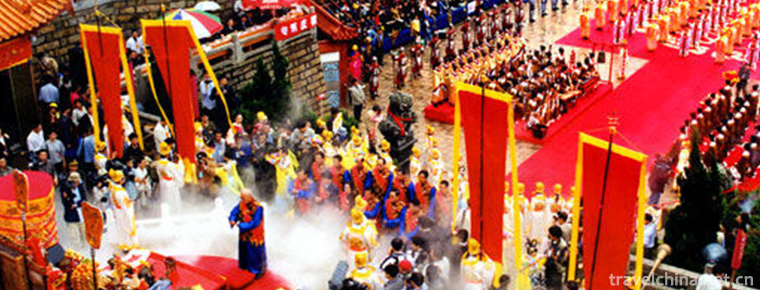
-
Global Dinosaur City Scenic Spot
The National 5A Tourist Scenic Spot Global Dinosaur City, located in Xinbei District, Changzhou, Jiangsu Province, is a comprehensive tourism resort with dinosaur theme.
Views: 274 Time 2018-12-06 -
Qin Lake National Wetland Park
Qinhu National Wetland Park is located between the central part of Jiangsu Province and the Yangtze and Huaihe River. .
Views: 181 Time 2018-12-06 -
South Lake
Nanhu, formerly known as Luweichi Lake, also known as Machang Lake and Luanhu Lake , is located in Nanhu District, Jiaxing City, Zhejiang Province.
Views: 237 Time 2018-12-07 -
Saint Sophia Cathedral in Harbin
St. Sophia Church is located in Sophia Square, Daoli District, Harbin City, Heilongjiang Province, China. It is a Byzantine-style Orthodox Church built in 1907.
Views: 169 Time 2019-02-08 -
Yanling National Flower and Tree Expo Park
Yanling National Flower and Tree Expo Park (Yanling Flower and Tree Expo Park) is located in the eastern part of Xuchang City, Henan Province..
Views: 108 Time 2019-02-28 -
Bay Leaf Jing Making Skills
In June 2008, the technique of making bay leaf Scriptures was listed in the national intangible cultural heritage protection list. The Beiye Sutra (Dai for "lazy") refers to the Buddhist.
Views: 132 Time 2019-04-04 -
Boxwood carving
Boxwood carving is one of the traditional folk carving arts in Zhejiang Province. It uses boxwood as carving material and uses the natural form of boxwood, which is smooth, delicate in texture and sol.
Views: 152 Time 2019-05-04 -
Jingdong drum
Jingdong Drum is a traditional rap art originating in Sanhe, Xianghe, Pinggu and Baodi of Hebei Province. The main instruments, in addition to the singer's left hand with copper plate,.
Views: 105 Time 2019-05-07 -
Manufacturing Techniques of Wanan Compass
Wan'an compass making technology, the local traditional handicraft in Xiuning County, Anhui Province, is one of the national intangible cultural heritage..
Views: 142 Time 2019-06-26 -
Guangdong embroidery
Guangdong embroidery is the general name of Guangzhou embroidery (Guangzhou embroidery) and Chaozhou embroidery (Chaozhou embroidery). It is one of the four famous embroidery in China..
Views: 202 Time 2019-07-16 -
Ba Jin
Ba Jin (November 25, 1904 - October 17, 2005), male, Han nationality , Sichuan Chengdu Man, his ancestral home Zhejiang Jiaxing 。 Ba Jin's original name Li Yao Tang And another pen name, Pei pole, bli.
Views: 268 Time 2019-09-06 -
Deyang climate
There are obvious differences in climate between the mountainous area in the northwest and the plain and hilly area in the southeast of Deyang City. The main climatic characteristics are: mild climate, four distinct seasons, abundant rainfall, long frost free period and obvious .
Views: 75 Time 2020-12-14
